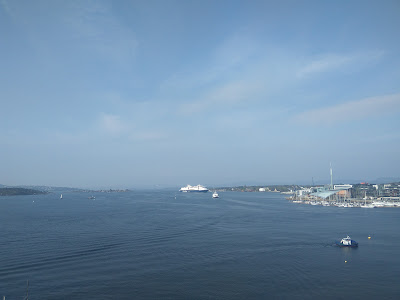It is true that in France/Europe we do not talk
enough about India. And in India, we talk even less about France and other
European countries. For the average Indians, somewhere, all the countries of
Europe are a little alike. It is often by visiting, by staying in these
countries, that we have a better understanding of cultures and citizens.
For my part, in recent years, I had the
opportunity to get to know Norway better owing to my professional assignments.
Through several trips to Oslo, and thanks to interactions with Norwegian
colleagues, I was able to observe the many differences that exist between
France and Norway.
Professional Culture
- The Greetings
In France, “Bonjour” (Hello) and “Au-revoir” (Bye) are the minimum requirements of politeness, prior to starting a conversation with someone and before leaving. Politeness also obliges us to greet the people who are around the person with whom we are having the conversation. In Norway, it does not happen exactly the same way. Here, you strictly greet the person you are dealing with. If because of your French background you greet other people, you risk surprising them or making them feel uncomfortable! According to the book “A social guidebook to Norway”, your unnecessary greetings can disturb the immediate and psychological space of a Norwegian [1]! So beware…😊
- Norvegian Offices
Otherwise, I noticed a peculiarity in the offices of Norwegian companies: in the morning, a basket filled with fruits is kept in the open space for a free serving. What a great way to start the day…!
Desks are often equipped with a small motor so that you can change its height. This not only makes it easy to adjust the level of the desk according to your preferences but also to be able to work while standing. Something unheard of in France…. 😊
Oslo
Compared to Paris, Oslo is a small city. Very pleasant to walk. In old Olso, there are very beautiful buildings.
The city is well equipped with a very good network of metro, tram, bus and even boat shuttles! All this with a unique "transport pass" valid throughout the suburbs. The boat takes you to the different districts crossing the fjord!
The Metro, the snow and the fjords!
French public toilets, a tribute to France!
Oslo’s Vigeland Park
The Almost Nearly Perfect
People
My contact with Norway led me to read a few
books on the Scandinavian countries. Among these books, “The Almost Nearly
Perfect People, behind the myth of the Scandinavian utopia”, appealed me a lot
[4]. One of the interesting things I learned was how the discovery of oil
changed the history of this country.
In 1965 Norway signed a treaty with Denmark to
share seabed and fishing rights in the North Sea. The Norwegian government at
the time obtained rights to a very large part of the seabed by ceding more
fishing rights to Denmark. The first major oil deposit in these Norwegian
waters was discovered in 1969, and there have been several since. Unlike
Denmark, in Norway the oil industry is nationalized and managed by the state
company, Statoil. In 2014, Norwegian oil wealth was $617 billion. To sustain
this wealth, Norway has invested a large part of this sum in more than 8,000
companies around the world! Moreover, a law restricts the annual expenditure by
the government of this wealth to 4%.
Somehow, the Norwegian welfare model is
possible because of this oil wealth. Paradoxically, the country shows its
desire to become more "green", while continuing to sell its oil and
gas abroad.
Well, well, I recommend you a visit to the
fascinating Norway!
[1] https://www.thesocialguidebook.no/products/the-social-guidebook-to-norway-1
[2] https://en.wikipedia.org/wiki/Frognerseteren_station
[4] https://www.amazon.fr/Almost-Nearly-Perfect-People-Scandinavian/dp/0099546078












No comments:
Post a Comment